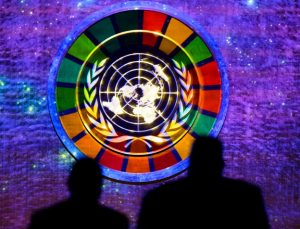FAIRFAX, Va., Sept. 19, 2023 (GLOBE NEWSWIRE) — Os nomes dos vencedores do Stevie Awards for Great Employers (Stevie Awards para Grandes Empregadores) de 2023, uma competio internacional, foram anunciados na segunda–feira, 18 de setembro, durante um evento de gala na cidade de Nova York. Os prmios reconhecem os melhores empregadores e profissionais de recursos humanos, equipes, conquistas e produtos e fornecedores relacionados a RH do mundo que ajudam a criar e impulsionar timos locais de trabalho.
Uma lista completa de todos os vencedores do Stevie Award Ouro, Prata e Bronze por categoria pode ser encontrada em http://www.StevieAwards.com/HR.
Um grupo diversificado de organizaes e indivduos de todo o mundo est entre os reconhecidos. A organizao que ganhou o Grand Stevie Award de Organizao Mais Honrada do Ano foi o Bank of America de Charlotte, Carolina do Norte, com sete prmios Ouro, sete Prata e sete Bronze Stevie Awards, totalizando 45,5 pontos. O prmio de Organizao do Ano foi concedido organizao com mais pontos, com cada Stevie de Ouro contando trs pontos, cada Stevie de Prata dois pontos, e cada Stevie Bronze contando 1,5 ponto.
O Grand Stevie Award de Melhor Indicao do Ano foi concedido Globe Telecom Inc. de Taguig City, Filipinas, por sua indicao de Ato Jiao para Diretor de RH do Ano, que recebeu uma pontuao mdia dos juzes de 9,5 de um total de 10 possveis.
Os principais vencedores do Gold Stevie Awards incluem Bank of America (7), Cathay United Bank (5), IBM (4), Tata Consultancy Services (4), Tech Mahindra (4), Dimes Sanayi ve Ticaret A.. (3), Enerjisa Enerji (3), Product Madness (3), TELUS International (3), Akbank T.A.S. (2), American Systems (2), Ayala Land Inc. (2), BlueSky Personnel Solutions (2), Borusan (2), DHL Global Forwarding, Freight (2), FedEx (2), Globe Telecom (2), GoHealth (2), Golden Hour Veterinary Telemedicine (2), Kordsa Teknik Tekstil A.. (2), Saint–Gobain North America (2), Siemens AG (2), e Top Hat (2).
Mais de 1.000 indicaes de organizaes de 28 pases foram avaliadas na competio deste ano. Os vencedores foram escolhidos por uma pontuao mdia de mais de 125 profissionais de todo o mundo que atuaram como julgadores.
Os vencedores nas 31 categorias de Empregador do Ano foram esolhidos por uma combinao nica de classificao de profissionais e votos do pblico em geral.
Os Stevie Awards for Great Employers homenageiam as conquistas em muitas facetas do local de trabalho. As categorias so:
- Employer of the Year Awards (Prmios de Empregador do Ano)
- HR Achievement Awards (Prmios de Conquista de RH)
- HR Individual Awards (Prmios Individuais de RH)
- HR Team Categories (Categorias de Equipes)
- Solution Provider Awards (Prmios de Provedor de Solues)
- Solutions, Implementations, and Training Programs or Media Awards (Prmios de Solues, Implementaes e Programas de Treinamento ou de Mdia)
- Thought Leadership Categorias (Prmios de Liderana de Pensamento)
- COVID–19 Response Awards (Prmios de Resposta Covid–19)
Os prmios so apresentados pelo Stevie Awards, que organiza oito das principais premiaes de negcios do mundo, incluindo os International Business Awards e American Business Awards .
Sobre o Stevie Awards
Stevie Awards so concedidos em oito programas: Stevie Awards sia–Pacfico, Stevie Awards Alemo, Stevie Awards Oriente Mdio e frica do Norte, The American Business Awards , The International Business Awards , Stevie Awards para Grandes Empregadoras, Stevie Awards para Mulheres Empresariais e Stevie Awards para Vendas e Servio ao Cliente. Os concursos Stevie Awards recebem mais de 12.000 nomeaes todos os anos de empresas de mais de 70 pases. Honrando empresas de todos os tipos e tamanhos, e as pessoas por trs delas, os Stevies reconhecem excelente desempenho no local de trabalho em todo o mundo. Saiba mais sobre os Stevie Awards em http://www.StevieAwards.com.
Um dos patrocinadores do 8 anual Stevie Awards para Grandes Empregadores o HiBob.
Contato de Marketing
Nina Moore
Nina@StevieAwards.com
+1 (703) 547–8389
Foto deste comunicado disponvel em: https://www.globenewswire.com/NewsRoom/AttachmentNg/06939e25–fba1–4760–aacd–ed60700c9173

GLOBENEWSWIRE (Distribution ID 8925066)






